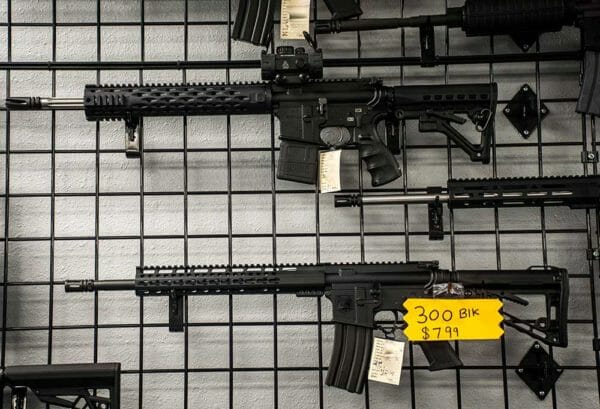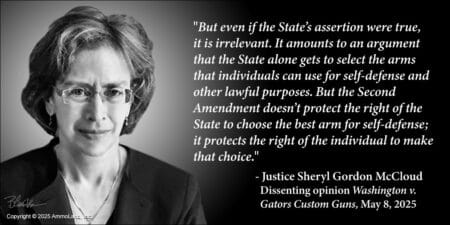
The United States Court of Appeals for the Tenth Circuit has ruled that New Mexico’s seven-day “cooling off” period for buying a gun is unconstitutional.
In 2024, New Mexico enacted a law that imposed a seven-day waiting period before a buyer can take possession of a firearm that they have purchased. Even if this isn’t a buyer’s first gun, they still must wait the “cooling off” period. There are no exceptions for imminent dangers. There have been situations in the past where a person was killed by their stalker while in these waiting periods.
After the law went into effect, two New Mexico residents, Samuel Ortega and Rebecca Scott, tried to buy guns without the “cooling off” period, but were unsuccessful. The retired law enforcement officer and Ms. Scott, who owns multiple guns, teamed up to sue the state, claiming that the law violated their Second and Fourteenth Amendment protections.
At the Federal District Court level, a New Mexico judge denied the plaintiffs’ request for a preliminary injunction against the enforcement of the state law. That judge found that a seven-day waiting period does not impede the right to keep and bear arms since the wait is only a week. The judge also claimed that the Second Amendment doesn’t cover the right to acquire arms, which put the judge at odds with established case law. He also stated that waiting periods were constitutional because it was a commercial condition on firearms sales.
The plaintiffs appealed the judge’s decision to the Tenth Circuit Court of Appeals. A three-judge panel would hear the appeal. To get a preliminary injunction, the plaintiffs must prove three things. The first is that they are likely to succeed on the merits of the case. The second is that they would suffer irreparable harm from the law. The last step to get a preliminary injunction is the balance of interest, which always falls to the rights of the people.
The panel would use the Bruen standard to determine if waiting periods were constitutional.
The first step in a Bruen analysis is looking at the original text of the Second Amendment. There was no doubt that the plaintiffs were part of the people, so the judges focused on the second clause, “the right to keep and bear arms shall not be infringed.” While the District Court found that the Second Amendment doesn’t include the right to acquire arms, the superior court disagreed. They stated that without the right to purchase a printing press, there could be no freedom of the press. They also used an example of banning the right to acquire sacred texts would violate the freedom of religion. The panel said the right to obtain arms is essential to the right to bear arms.
The judges wrote: “First, we reject the notion that other waiting period laws themselves carve out a historically grounded principle. They are mostly a modern innovation. New Mexico points out that the Waiting Period Act’s historical pedigree stretches back to 1923, but that is an oversimplification. True, California imposed the first (one-day) waiting period in that year, intended to give officials time to conduct a background check. Silvester, 843 F.3d at 824. A few states followed suit over the next few decades. But those early examples are easily distinguished from this one because they were explicitly tied to the time it took to conduct a background check. Until the 1990s, no waiting period law required a prospective buyer to wait longer than was necessary to conduct a background check.”
The panel also targeted the “commercial condition” argument. The panel didn’t believe that the waiting period was a “commercial condition.” They point out that sales between federal firearms licensees (FFLs) don’t require a waiting period. They also say that if an FFL transfers a gun to a friend for non-commercial purposes, that person would still be subject to the “cooling off” period. To the panel, these facts killed the “commercial condition” argument.
The burden to justify the law by using historical analogues from the founding era fell to New Mexico. New Mexico provided examples of waiting periods from the 1900s. The judges were not impressed and rejected these analogues as too far removed from the founding era. The state also tried to use public intoxication laws and racist gun laws restricting gun ownership from minorities. According to the Supreme Court, an analogue doesn’t have to be a “historical twin,” but must be similar. The panel didn’t feel these laws were related to the law in question.
The panel reversed and remanded the case to the District Court to issue a ruling consistent with the Circuit Court’s opinion. The defendants can ask for an en banc hearing, where the panel’s decision would be vacated, and the full bench would rehear the case. New Mexico did not state whether it would seek an en banc hearing.
Obama Judge Rules That New York Must Issue Out-of-State Permits
Saying Quiet Part Out Loud Reveals Fatal Flaw of Gun Control
About John Crump
Mr. Crump is an NRA instructor and a constitutional activist. John has written about firearms, interviewed people from all walks of life, and on the Constitution. John lives in Northern Virginia with his wife and sons, follow him on X at @crumpyss, or at www.crumpy.com.







GOOD!! NOW how about the Dumbocrats’ UNCONSTITUTIONAL “LAWS” in Maryland?
So the NM crap went down in 2024, and in Aug 2025 we just get a ruling? Do we see the issue now?
I worked in NM. for 6 months, back in the 80s, beautiful country, great hunting and fishing.
Had the chance to return and finish my career there.. Glad I didn’t, the politicians have dammed near ruined the State.